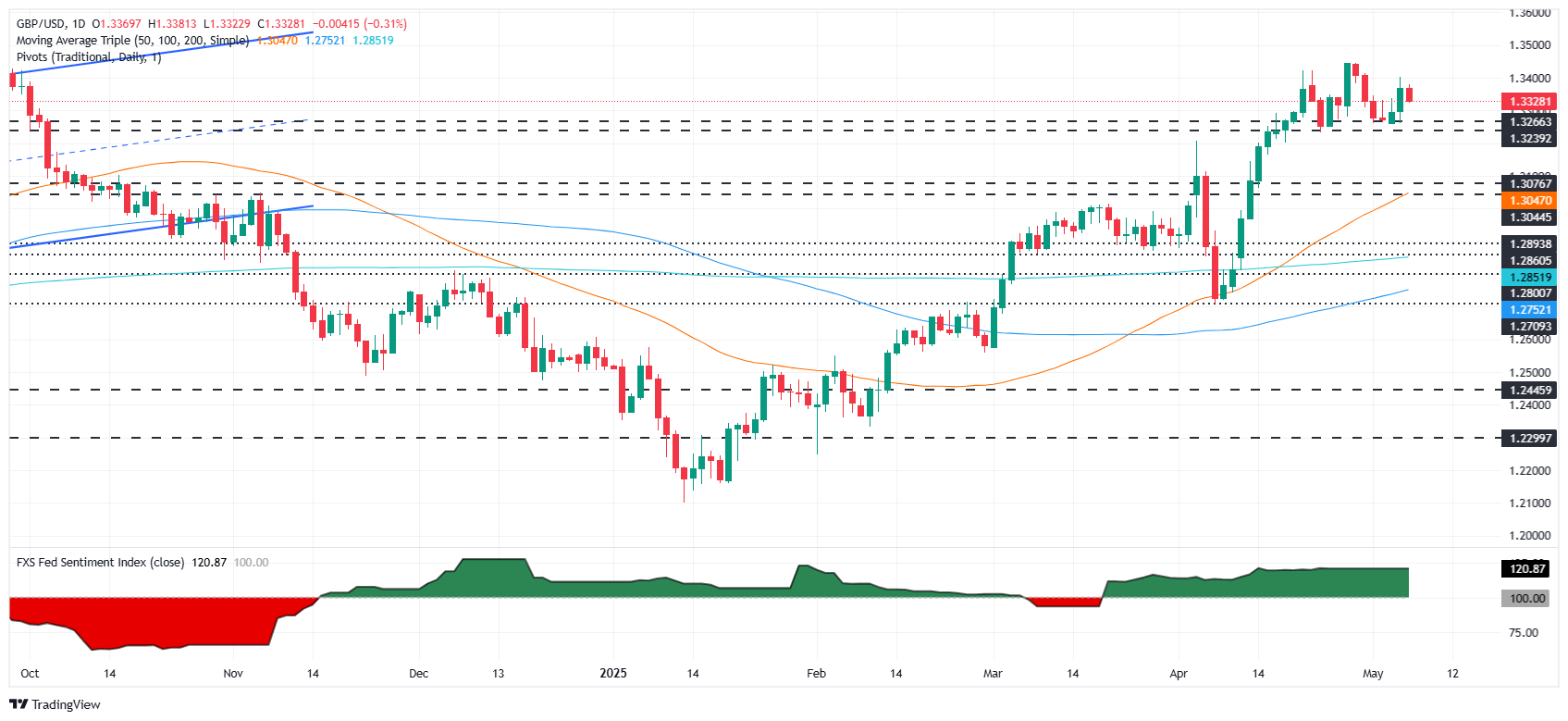GBP/USD slides as Fed holds rates, flags rising inflation, growth uncertainty
- Fed keeps rates steady at 4.25%–4.50%, citing increased economic uncertainty.
- Officials highlight solid growth and strong labor market, but note inflation remains elevated.
- Balance sheet runoff to continue; Dollar firms as risk sentiment shifts post-Fed announcement.
The GBP/USD extended its losses on Wednesday after the Federal Reserve decided to keep interest rates unchanged as expected, with most eyes set on Fed Chair Jerome Powell's press conference. At the time of writing, the pair trades near 1.3331, down more than 0.20%.
GBP/USD drops over 0.20% to 1.3331 as traders await Powell’s press conference for policy clarity
The Federal Reserve unanimously voted to hold interest rates steady at 4.25%–4.50%, as expected. The central bank noted that economic uncertainty has increased, with heightened risks of both elevated inflation and rising unemployment.
Officials acknowledged that the economy continues to expand at a solid pace, supported by a resilient labor market, though they warned that inflation remains somewhat elevated.
On the balance sheet, the Fed reaffirmed its commitment, stating: “The Committee will continue reducing its holdings of Treasury securities and agency debt and agency mortgage‑backed securities.”
GBP/USD reaction to Fed’s decision

The GBP/USD initially spiked to 1.3341, but as traders digested the statement, the Greenback recovered some ground, pushing the exchange rate lower. At the time of writing, spot prices lie close to the daily low of 1.3322, which could be tested if Powell becomes hawkish at his press conference.
In that outcome, the next key support level is the 1.3300 mark, followed by the 20-day Simple Moving Average (SMA) at 1.3276. On the flip side, Powell’s dovish approach could clear the path towards 1.3400 and put into play the year-to-date (YTD) peak at 1.3443.
Fed FAQs
Monetary policy in the US is shaped by the Federal Reserve (Fed). The Fed has two mandates: to achieve price stability and foster full employment. Its primary tool to achieve these goals is by adjusting interest rates. When prices are rising too quickly and inflation is above the Fed’s 2% target, it raises interest rates, increasing borrowing costs throughout the economy. This results in a stronger US Dollar (USD) as it makes the US a more attractive place for international investors to park their money. When inflation falls below 2% or the Unemployment Rate is too high, the Fed may lower interest rates to encourage borrowing, which weighs on the Greenback.
The Federal Reserve (Fed) holds eight policy meetings a year, where the Federal Open Market Committee (FOMC) assesses economic conditions and makes monetary policy decisions. The FOMC is attended by twelve Fed officials – the seven members of the Board of Governors, the president of the Federal Reserve Bank of New York, and four of the remaining eleven regional Reserve Bank presidents, who serve one-year terms on a rotating basis.
In extreme situations, the Federal Reserve may resort to a policy named Quantitative Easing (QE). QE is the process by which the Fed substantially increases the flow of credit in a stuck financial system. It is a non-standard policy measure used during crises or when inflation is extremely low. It was the Fed’s weapon of choice during the Great Financial Crisis in 2008. It involves the Fed printing more Dollars and using them to buy high grade bonds from financial institutions. QE usually weakens the US Dollar.
Quantitative tightening (QT) is the reverse process of QE, whereby the Federal Reserve stops buying bonds from financial institutions and does not reinvest the principal from the bonds it holds maturing, to purchase new bonds. It is usually positive for the value of the US Dollar.

